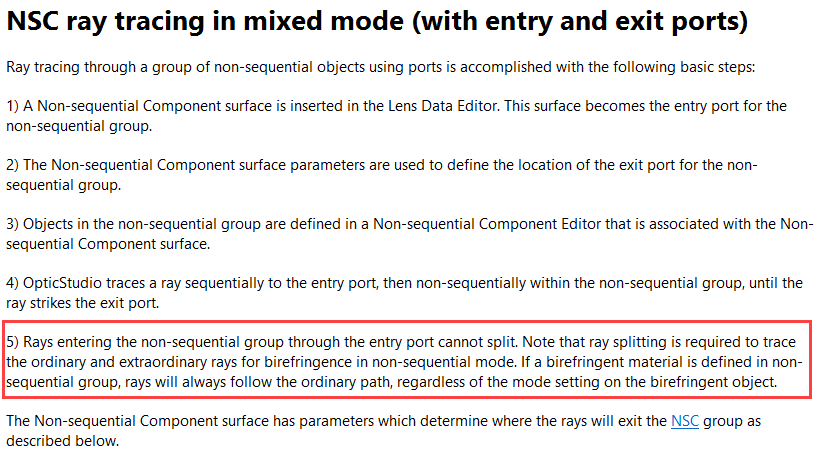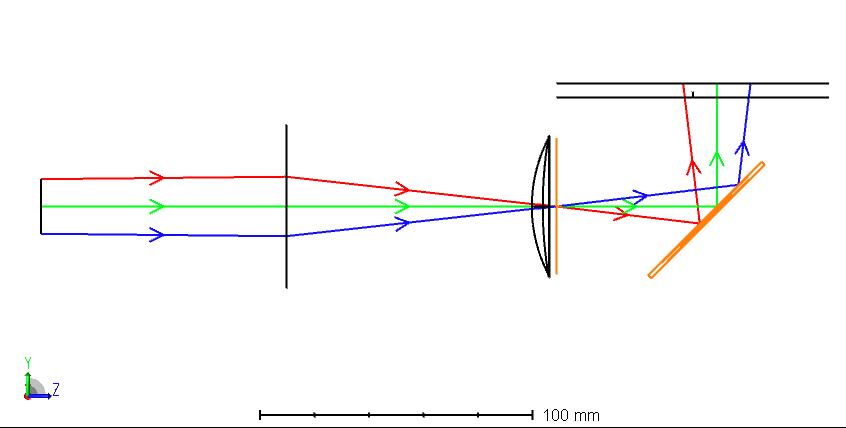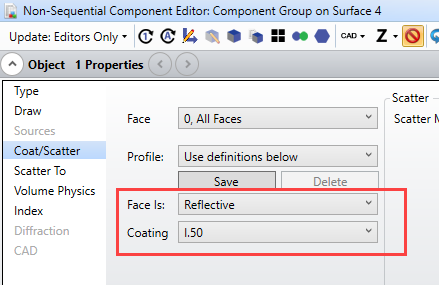I am building a simple Sequential ray trace using a single Non-Sequential element (NSE). The NSE is an STL object generated in Blender. It is a simple thin rectangular plate (with a finite depth). The NSE is coated with coated with a high-reflection coating for 633 nm.
The source has two wavelengths (both enabled), 0.633 and 0.450 micrometers. Given the coating on the NSE, I expect my ray trace to show most of the 0.633 micrometer rays reflected, and the 0.450 micrometer rays transmit through the plate. I’ve experienced this issue with other STL shapes generated in Blender.
Why are the rays not splitting properly? The plate has a base glass material (FK3), and “Split NSC Rays” is turned on.






